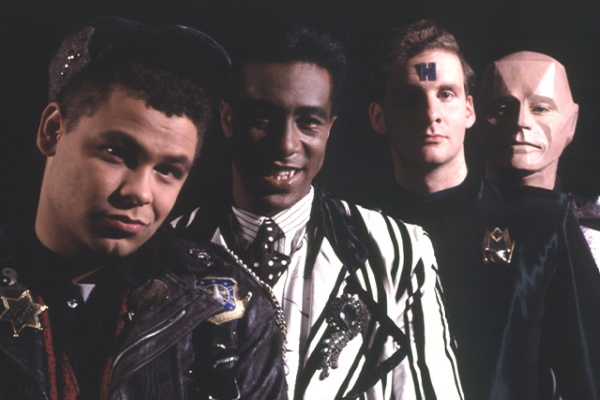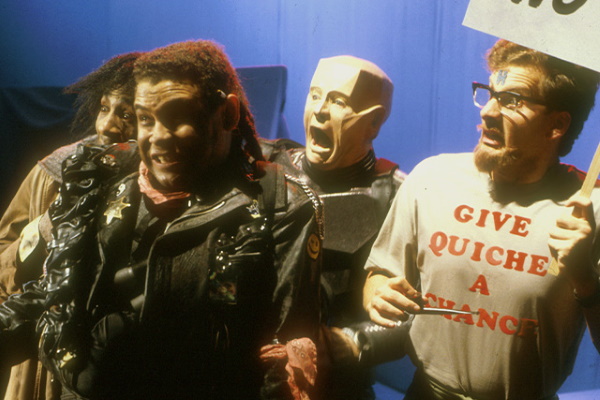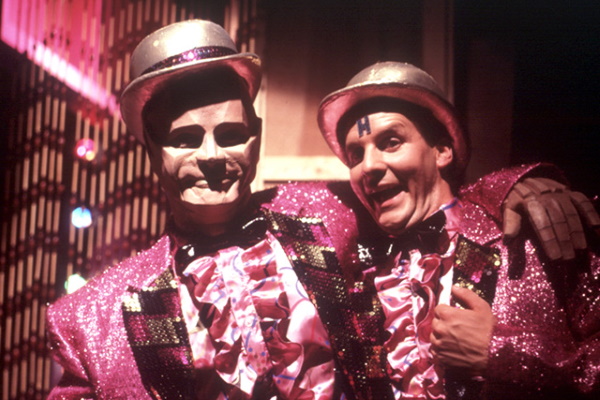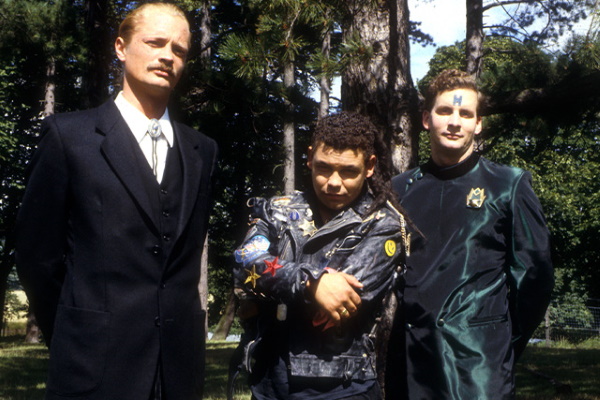Thirty Three
The transformational Series III hits its 30th anniversary.
15 November, 2019
1989 was one of the most epoch-defining years of the late twentieth century. From the fall of the Berlin Wall to the development of the World Wide Web, the release of Tim Burton's Batman to the birth of Taylor Swift. But it was also the year that Red Dwarf changed forever, and in many ways became the most recognisable version of itself.

It's hard to imagine what Series III would have felt like on that November night thirty years ago to viewers who only a year previously had been watching Series II. From the brash, fast-paced opening titles to the changes in cast, costume, models, sets and general aesthetic, it's almost as if it's landed from a decade beyond the second series, rather than just fourteen months. Red Dwarf III is a show bursting with confidence - the kind of confidence that comes from successfully navigating Difficult Second Series Syndrome with some of your best ever critical notices, an immediate renewal, and the show's writer-creators also becoming its producers.
Of course, Red Dwarf's world had already been expanded just a couple of weeks prior to Series III's opening night, with the release of the first novel. The wider scope of Infinity Welcomes Careful Drivers included the addition of Robert Llewellyn's Kryten as a regular member of the cast - prefiguring the same development in the TV show. However, this all-important change in lineup - along with the recasting of Holly from Norman Lovett to Hattie Hayridge - would not be explained on screen at the start of the series.
This was down to the abandonment of the originally-intended series opener, Dad, which would have explored the aftermath of Series II's pregnancy cliffhanger. When the episode was eventually dropped, the tidying up of the continuity was left to a deliberately Star Wars-esque text scroll - intended at the time to be jokily too fast to read, but quickly decoded by fans in the VHS era.
Instead, Series III came bang out of the gates with Backwards, still to this day one of the most inventive and celebrated episodes of the show's entire run. Considering the characters had left Red Dwarf itself so rarely in the first two series, the fact that so little of this episode actually takes place on the ship itself sets the tone for the huge amount of location filming and external scenes that would run through the third series. And it immediately sets out a stall that demands that every episode that follows should also mine a clever sci-fi idea for maximum laughs.

At the same time, however, character continued to be the most important driving factor in Red Dwarf III's writing. Marooned is a remarkable character piece, practically an entire two-hander between Lister and Rimmer that both reveals new secrets about both of them, yet relies heavily on what we already know of them for its drama and comedy to succeed. Were it not taking place onboard Starbug, you could easily imagine it as a Series II episode.
And while Polymorph of course draws its central threat from sci-fi, again it's the viewers' knowledge of the characters that makes their alternate personalities - the first, but far from the last time the show would explore this concept - all the more amusing. It's particularly impressive that this succeeds with Kryten, who at this point we've only known for three episodes - and yet we still get supreme joy out of seeing his character flipped.
(Polymorph is also, of course, the first episode to solve the show's "no aliens" rule, with the creation of "genetically engineered lifeforms" - a handy get-out clause enabling the use of several weird and wonderful races in future years, but always with a deliberate direct tie back to human origins.)

The emotion-sapping Polymorph and time-twisting of Backwards are distinctly Red Dwarf-ish inventions, but Bodyswap falls on established sci-fi lore a bit more heavily for its own plot. The opening scenes suggest a story you could easily imagine Star Trek doing - but once the body-swap mechanic becomes a vehicle for once again exploring the differences and conflicts between Rimmer and Lister, it becomes comedy of a sort that only Red Dwarf could ever do. Timeslides, similarly, eschews the usual hoary time-travel tropes - with the possible exception of a Hitler appearance - and instead plays with the unique concept of only being able to travel back to the specific time and place in a single photograph.
By the time we reach The Last Day, the new Red Dwarf setup is so ensconced in our minds that the possible departure of Kryten would feel like a genuine loss - even though he only joined at the start of the series. The Red Dwarf crew feels complete for the first time, and the show becomes less about relentlessly questing to get "home" and more about the realisation that Red Dwarf is home.
Aside from recruiting two new main cast members - along with major production figures such as designer Mel Bibby and costume designer Howard Burden - Series III upped the stakes when it came to guest cast. While guest appearances were rarer across the first two series - and often reliant on the same returning former shipmates - the third series went to town with notable comedy figures such as Arthur Smith, Ruby Wax and Gordon Kennedy appearing, as well as famed socialite Koo Stark.

The successful expansion of scope, and reinvention of look and feel, that Red Dwarf III undertakes is all the more remarkable considering the incredibly short gap between production and broadcast - filming began in September 1989, with the final episode's audience recording taking place on 11th October. Just a month later, on 14th November, the first episode was airing. Seat-of-the-pants stuff - but that's Red Dwarf for you.
As the years went by, Red Dwarf would continue to reinvent and reimagine itself, never standing still. But there was never quite as significant a regeneration as the one that took place in 1989 (and indeed, it's notable that even with a change of studios for 1991's Series IV, the continuity in look and feel would be greater than between any two subsequent years until Series XI and XII's double-header). It was the series that took the show headlong into the 1990s, and laid the foundations for the ever-growing popularity that would follow.
More about Series III:
All photographs courtesy Paul Grant














